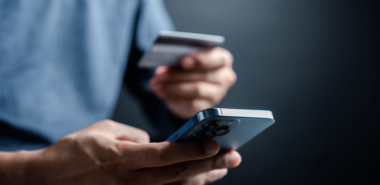
Last week I discovered a new, positive side effect of contactless payment, or rather a negative outcome of paying with notes and coins – if you buy things with cash in London, you may be seen as highly uncool!
I live in the South of France but often travel to London for work. After a long day of meetings I met up with two old university friends for a well-deserved pint (or two). As I’m polite, I offered to pay for the round of beers. My friends were initially pleased but I didn’t expect the reaction when I pulled a £10 note out of my pocket to pay (and no it wasn’t because they thought this wasn’t enough in the expensive British capital).
These two friends work in the center of London in the Arts and Tech sectors and both of them laughed at me for using cash, remarking “I don’t think I’ve paid using real money for 6 months or so.” They both have multiple contactless debit cards and living in a country with nearly 480,000 contactless POS terminals, they rarely need notes or coins to pay for a pint, newspaper or in fact anything under the £30 limit.

My French bank hasn’t offered me a contactless card yet or Apple Pay on my phone and to avoid paying currency exchange fees I tend to take out a stock of cash when I arrive in the UK. However, over the next few days I realized what an alien I was as everyone around me paid for their coffee, lunch, bus fare and in fact everything with their contactless card or mobile. And, on the train back to the airport at the end of my trip you couldn’t use cash to buy your ticket – as the old man sitting next to me found out to his expense – no pun intended.
Attitudes have changed fast and not just in the UK. According to a recent survey by ING around 1 in 5 Europeans rarely carry any notes and coins with them and over a third would be happy to go completely cashless. While most people still think that they will never go completely cashless, nearly 80% expect to continue to reduce their use of cash and the convenience of contactless payment is clearly playing a role.
In a few years contactless has gone from being a novelty to an integral part of everyone’s lives in the UK. Once the POS infrastructure was in place and an initial wave of awareness with consumers and retail assistants had been done, the use of contactless boomed and even my 70 year old parents have forgotten that they once didn’t know how to use it.
There are many other countries that are in the same state as the UK such as Poland and Australia. Consumers benefit from shorter lines while stores are reducing cash handling and it can only be a matter of time before it becomes the payment norm in every country. The US is the world’s largest payment card market and is still in the midst of the migration to chip cards. As banks and stores continue to replace their infrastructure they have a unique opportunity to move straight to chip and contactless to gain the benefits in both security and convenience from contactless EMV payment. In a recent blog on the EMV card migration in the U.S., we found that some consumers felt the payment process was now clunky or slow and contactless could be a way to improve the user experience.
Anyway, I hope my bank sends me a new contactless card soon so that I can pay in one of the growing number of stores in France that now accept contactless payment. In the meantime, next time I go to the UK I won’t offer to buy the drinks – but maybe this will make me even less cool!


